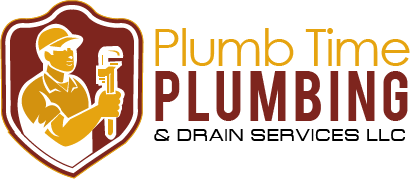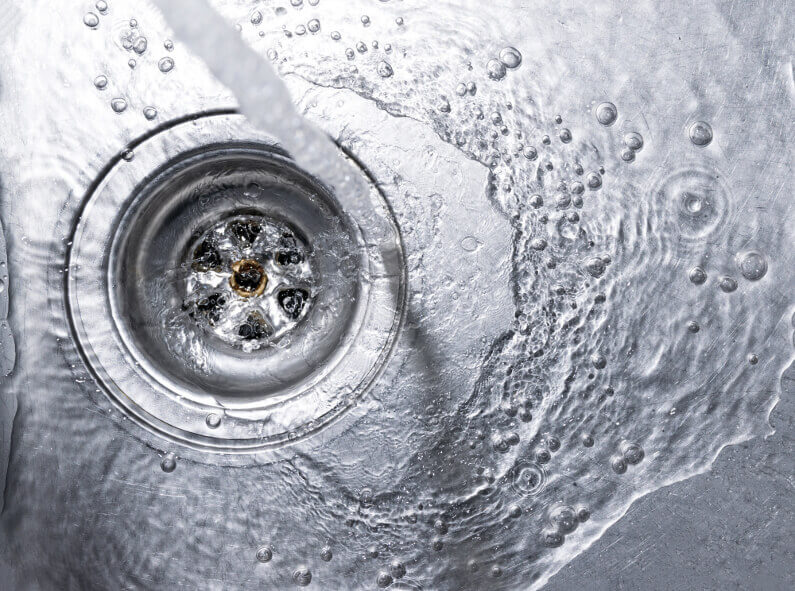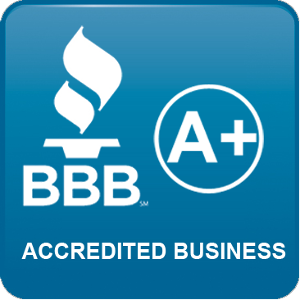If your home is being permeated by strange smells and you can’t seem to find the source — you may want to think about checking your drains.
Dirty, clogged drains are a fast-track way to spread not only foul odors through your home but dangerous bacteria, too. Here’s how to how to clean drains like a pro and keep them clog-free for the foreseeable future.
A Step-By-Step Guide on How to Clean Drains
Some of the most common drains that face organic buildup, clogs, and odors are the drains in the bathroom and kitchen. This is because these drains transport the greatest amount of water flow and waste.
A slow draining sink or shower can be a real nuisance. While a slow draining toilet can strike the fear of God into any person — we all know that feeling. So, in order to avoid all of this, here’s how to clean and maintain the drains throughout your home.
Step 1: Remove Potential Drain Clogs
A slow draining sink, shower, or toilet is generally caused by a blockage or buildup of some kind. Naturally, the first thing you need to do before cleaning a drain is to take care of any potential clogs.
To do this you can use a standard plunger which can be found at almost any supermarket or homeware store. Bellow-style plungers are best for this task. Plungers can be used on sinks and bathtubs — not just toilets.
All you have to do is fill the sink or tub with enough water to cover the drain. Press the plunger firmly over the drain to create a seal, then add your water. Once there’s enough water, use several quick pumps to unclog the drain.
Bear in mind that if you have a double-bowl sink, you will need to close the other drain in order to create a complete seal.
Other Clog Clearing Methods
If you need to remove drain clogs near the drain opening, you can simply use a barbed plastic cleaning tool. The Zip-It Bath and Sink Snare are both great for this task.
These tools are equipped with back-angled barbs that pull out hair and other materials that may be clogging your drains.
Alternatively, you can use a gas or water-powered cleaner to blow out more stubborn drain clogs. These are available in the form of aerosol drain cleaners or water bladders that use pressurized water.
Finally, you can also treat drain clogs and buildup in a biological way. An enzymatic or bacterial drain cleaner works best. It’s best to pour this down your drain and leave it overnight in order to dissolve organic material.
Biological cleaners are slower to work, but far safer for you, your plumbing, and the local environment when compared to chemical cleaners.
Step 2: Banish Foul Odors
Once your drains have been cleared of buildup, it’s time to clean them out and get rid of those funky smells permeating throughout your home. There are a few simple methods to choose from:
1. Use a Mixture of Vinegar, Baking Soda, and Hot Water
This concoction helps to eliminate odors as well as a buildup of grease, bacteria, and other organic residues. This is also a good way to prevent future drain clogs.
Pour half a cup of baking soda down your drain, followed by half a cup of white vinegar. Then cover the drain opening and let it sit for 15-minutes. After this, pour boiling water down the drain to flush it out.
A mixture of baking soda and vinegar can be used to clean drain openings and remove bacteria and mineral deposits from your faucets, too.
2. Use a Biological Cleaner
Another option is to use a biological cleaner to strip away dirt, grime, and bacteria. They are effective at keeping your drains odor free and help to prevent the buildup of harmful bacteria and mold.
Some of the best biological or enzymatic drain cleaners include Zep and Citra-Drain. These are both safe and environmentally friendly. If your home operates on a septic system, these biological cleaners work best.
3. Clean Your Garbage Disposal with Ice, Salt, and Lemon
Your home’s garbage disposal is also a drain that is commonly neglected. This makes it a major culprit for spreading bad odors throughout the home.
If your garbage disposal still runs well but smells terrible, a good way to clean out organic buildup is with ice, salt, and lemon peels.
Fill the disposal with a few cups of ice, a handful of coarse salt, and the peels of one lemon. Grind the mixture up for a bit and then rinse with water. Don’t fret, the ice will not damage the steel grinders!
Step 4: Prevent Future Drain Clogs
Here are a few proven methods to keep your drains clear and buildup-free for the foreseeable future:
1. Use Drain Screens
These devices allow water and other small particles to pass through your drain. But they block out hair, large particles of food, and other scum. Drain screens are ideal for the kitchen sink, the bathtub, and shower.
2. Never Pour Grease Down Your Drain
Liquid grease will harden over time and clog your drain. Worse still, grease can cause sewer clogs too. Make sure you wipe down greasy dishes with a paper towel before rinsing them. Use plenty of hot water and detergent when washing greasy dishes.
3. Perform Regular Maintenance on Drains and Stoppers
Make an effort to keep your drains clean and clear on a regular basis. Pour a few gallons of boiling water down your sink once a week. Clean your sink stoppers regularly too as they tend to gather grime, hair, and other particles.
In Need of Plumbing Repair or Sewer Inspection?
At Plumb Time Plumbing we understand the importance of clean drains and are the experts you need when a plumbing disaster strikes.
Not only this, but we are also here to offer general plumbing maintenance, drain, and sewer line inspection, water heater repair, and more. Contact our team for all your plumbing needs — great or small!











Thanks for providing a lot of useful information here!!
Great Stuff!! Thank you for all your good tips.
Any idea how to get rid of drain flys??
Thank u for passing on Ur expert advice! Much appreciated!
For drain flies, use a drain clearing product like Zep mentioned in the article